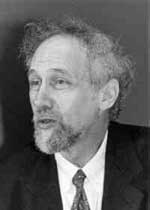The
previous post in this sequence was [(co)tangent bundles][1]. Let $A$ be
a $V$-algebra where $V = C \times \ldots \times C$ is the subalgebra
generated by a complete set of orthogonal idempotents in $A$ (in case $A
= C Q$ is a path algebra, $V$ will be the subalgebra generated by the
vertex-idempotents, see the post on [path algebras][2] for more
details). With $\overline{A}$ we denote the bimodule quotient
$\overline{A} = A/V$ Then, we can define the _non-commutative
(relative) differential n-forms_ to be $\Omega^n_V~A = A \otimes_V
\overline{A} \otimes_V \ldots \otimes_V \overline{A}$ with $n$ factors
$\overline{A}$. To get the connection with usual differential forms let
us denote the tensor $a_0 \otimes a_1 \otimes \ldots \otimes a_n =
(a_0,a_1,\ldots,a_n) = a_0 da_1 \ldots da_n$ On $\Omega_V~A =
\oplus_n~\Omega^n_V~A$ one defines an algebra structure via the
multiplication $(a_0da_1 \ldots da_n)(a_{n+1}da_{n+2} \ldots da_k)$$=
\sum_{i=1}^n (-1)^{n-i} a_0da_1 \ldots d(a_ia_{i+1}) \ldots da_k$
$\Omega_V~A$ is a _differential graded algebra_ with differential $d :
\Omega^n_V~A \rightarrow \Omega^{n+1}_V~A$ defined by $d(a_0 da_1 \ldots
da_n) = da_0 da_1 \ldots da_n$ This may seem fairly abstract but in
case $A = C Q$ is a path algebra, then the bimodule $\Omega^n_V~A$ has a
$V$-generating set consisting of precisely the elements $p_0 dp_1
\ldots dp_n$ with all $p_i$ non-zero paths in $A$ and such that
$p_0p_1 \ldots p_n$ is also a non-zero path. One can put another
algebra multiplication on $\Omega_V~A$ which Cuntz and Quillen call the
_Fedosov product_ defined for an $n$-form $\omega$ and a form $\mu$ by
$\omega Circ \mu = \omega \mu -(-1)^n d\omega d\mu$ There is an
important relation between the two structures, the degree of a
differential form puts a filtration on $\Omega_V~A$ (with Fedosov
product) such that the _associated graded algebra_ is $\Omega_V~A$ with
the usual product. One can visualize the Fedosov product easily in the
case of path algebras because $\Omega_V~C Q$ with the Fedosov product is
again the path algebra of the quiver obtained by doubling up all the
arrows of $Q$. In our basic example when $Q$ is the quiver
$\xymatrix{\vtx{} \ar[rr]^u & & \vtx{} \ar@(ur,dr)^v} $ the
algebra of non-commutative differential forms equipped with the Fedosov
product is isomorphic to the path algebra of the quiver
$\xymatrix{\vtx{} \ar@/^/[rr]^{a=u+du} \ar@/_/[rr]_{b=u-du} & &
\vtx{} \ar@(u,ur)^{x=v+dv} \ar@(d,dr)_{y=v-dv}} $ with the
indicated identification of arrows with elements from $\Omega_V~C Q$.
Note however that we usually embed the algebra $C Q$ as the degree zero
differential forms in $\Omega_V~C Q$ with the usual multiplication and
that this embedding is no longer an algebra map (but a based linear map)
for the Fedosov product. For this reason, Cuntz and Quillen invent a
Yang-Mills type argument to “flow” this linear map to an algebra
embedding, but to motivate this we will have to say some things about
[curvatures][3].
[1]: http://www.neverendingbooks.org/index.php?p=352
[2]: http://www.neverendingbooks.org/index.php?p=349
[3]: http://www.neverendingbooks.org/index.php?p=353
